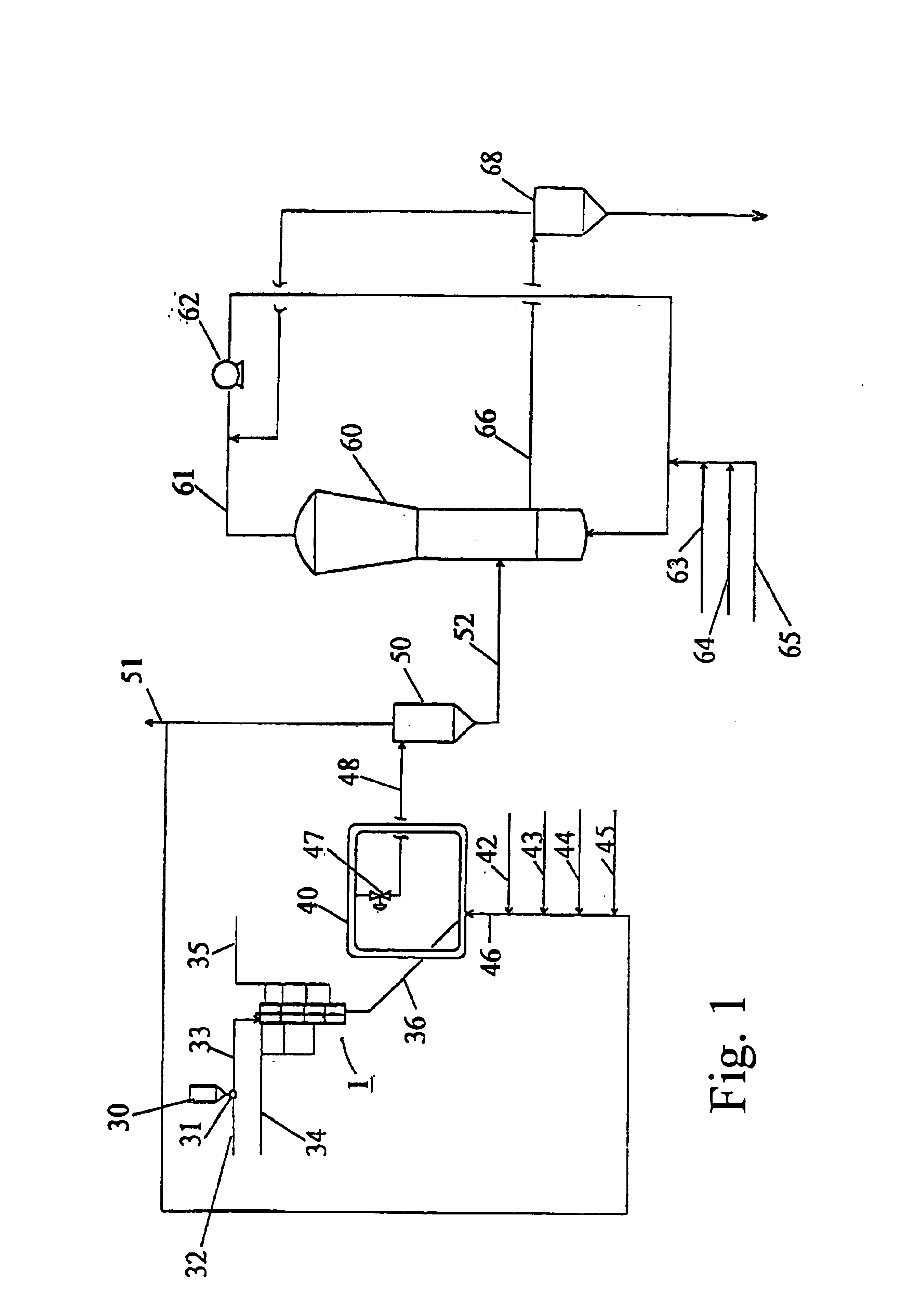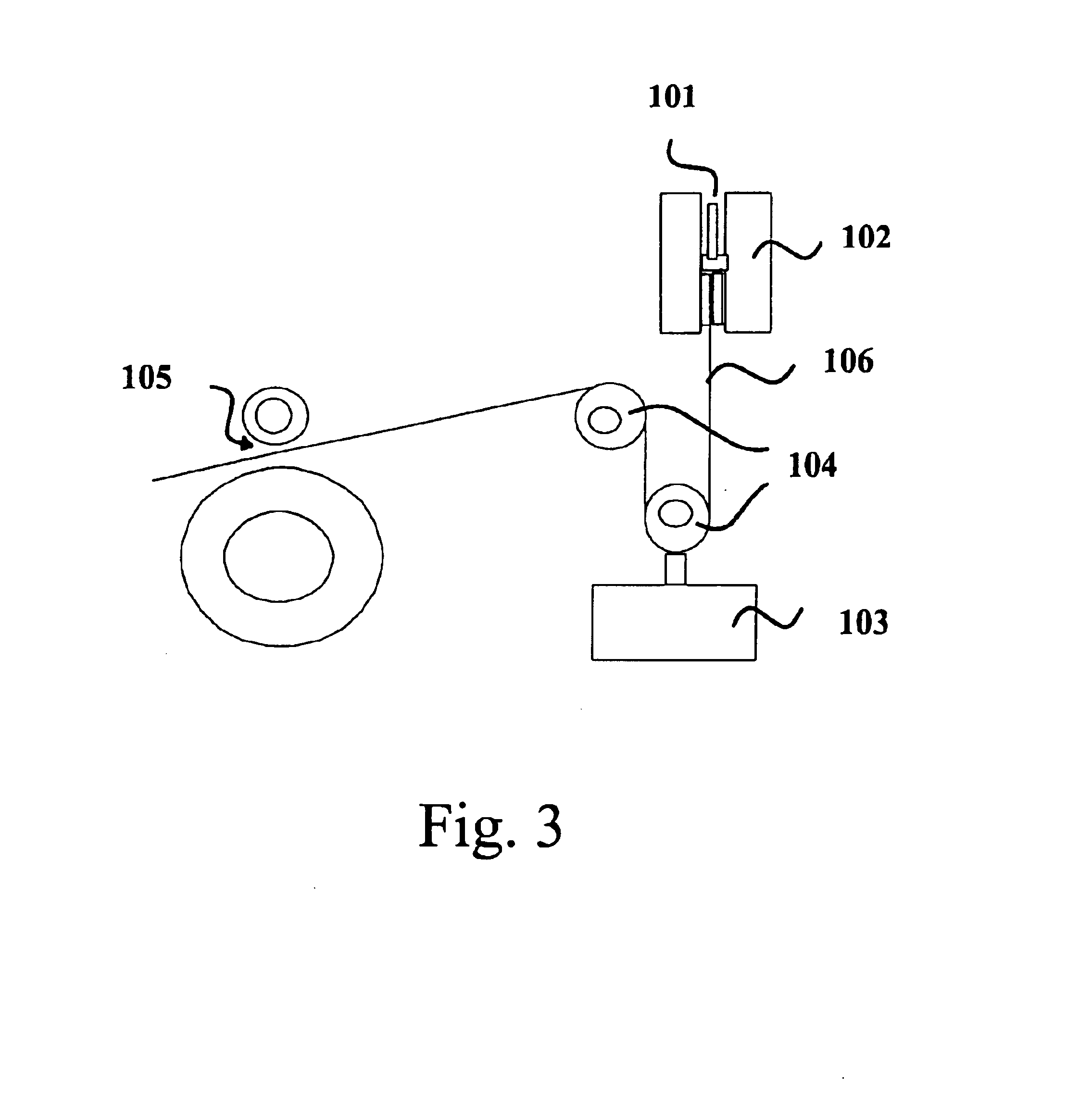High melt strength polypropylene
- Summary
- Abstract
- Description
- Claims
- Application Information
AI Technical Summary
Benefits of technology
Problems solved by technology
Method used
Image
Examples
example 1
Polymerization of Propylene on Laboratory Scale
Propylene was polymerized on bench scale by producing a polymer fraction of high molar mass in a first polymerization step without any addition of hydrogen and in a second polymerization step, which was carried out in the presence of hydrogen in order to broaden the molar mass distribution and increase the final MFR to required level.
The polymerizations were carried out in the presence of a Ziegler-Natta catalyst with an external electron donor corresponding to the general formula I and V above (dicyclopentyl dimethoxy silane, in the following abbreviated “D”). The catalyst was prepared according to the method described in FI Patent No. 88047. A polymer prepared in the presence of a corresponding catalyst system containing a conventional donor corresponding to the general formula IV (cyclohexyl methyl dimethoxy silane or abbreviated “C”) was tested. As a reference, a commercial polypropylene was used. Polymerizations were made in liquid...
example 2
Two-Stage Continuous Polymerization of Propylene
Propylene homopolymers were produced in a pilot plant having a loop reactor and an agitated fluid bed gas-phase reactor connected in series. The catalyst, cocatalyst, and an external donor were fed into the loop reactor. The reaction medium, including hydrogen, of the loop was flash ed away before the solid polymer containing the active catalyst entered the gas-phase reactor.
A prepolymerized MgCl2 supported Ti-catalyst (prepared according to FI Patent No. 88047 was used in the polymerization. The cocatalyst was triethyl aluminium (TEA) and dicyclopentyl dimethoxy silane (DCPDMS) was used as an external donor. The Al / Ti mole ratio was 150 and Al / donor mole ratio 5.
In the first stage (loop reactor), a low molar mass propene homopolymer was produced and polymerization was continued in the second stage (gas-phase reactor) which produced high molar mass propene homopolymer. Hydrogen feed was used in the loop reactor to control the MFR of th...
example 3
Two-Stage Continuous Copolymerization of Propylene and Ethene
Polymerization of propylene in a loop reactor was carried out as in Example 2 but using higher hydrogen feed in order to adjust MFR2 to 180 in the loop reactor. The reaction was continued in a second stage (a gas-phase reactor) where no hydrogen but additional propylene and 2.5 mol-% ethylene were fed. The MFR2 of th e product was 2.6 g / 10 min and ethylene content 0.8 wt-%. The production rate ratio between the first and the second reactor was 70 / 30. Polymerization temperatures and Al / Ti and Al / donor mol ratios were as in Example 2. The polymer had an η0 of 116,300 Pa*s, a SHI (0 / 50) of 261 and a melt strength of 5 g.
PUM
| Property | Measurement | Unit |
|---|---|---|
| Temperature | aaaaa | aaaaa |
| Pressure | aaaaa | aaaaa |
| Pressure | aaaaa | aaaaa |
Abstract
Description
Claims
Application Information
 Login to View More
Login to View More - R&D
- Intellectual Property
- Life Sciences
- Materials
- Tech Scout
- Unparalleled Data Quality
- Higher Quality Content
- 60% Fewer Hallucinations
Browse by: Latest US Patents, China's latest patents, Technical Efficacy Thesaurus, Application Domain, Technology Topic, Popular Technical Reports.
© 2025 PatSnap. All rights reserved.Legal|Privacy policy|Modern Slavery Act Transparency Statement|Sitemap|About US| Contact US: help@patsnap.com



